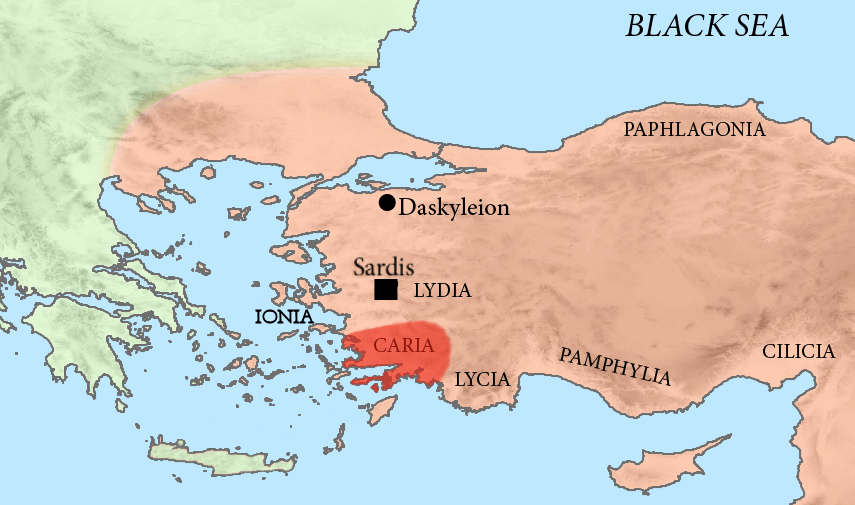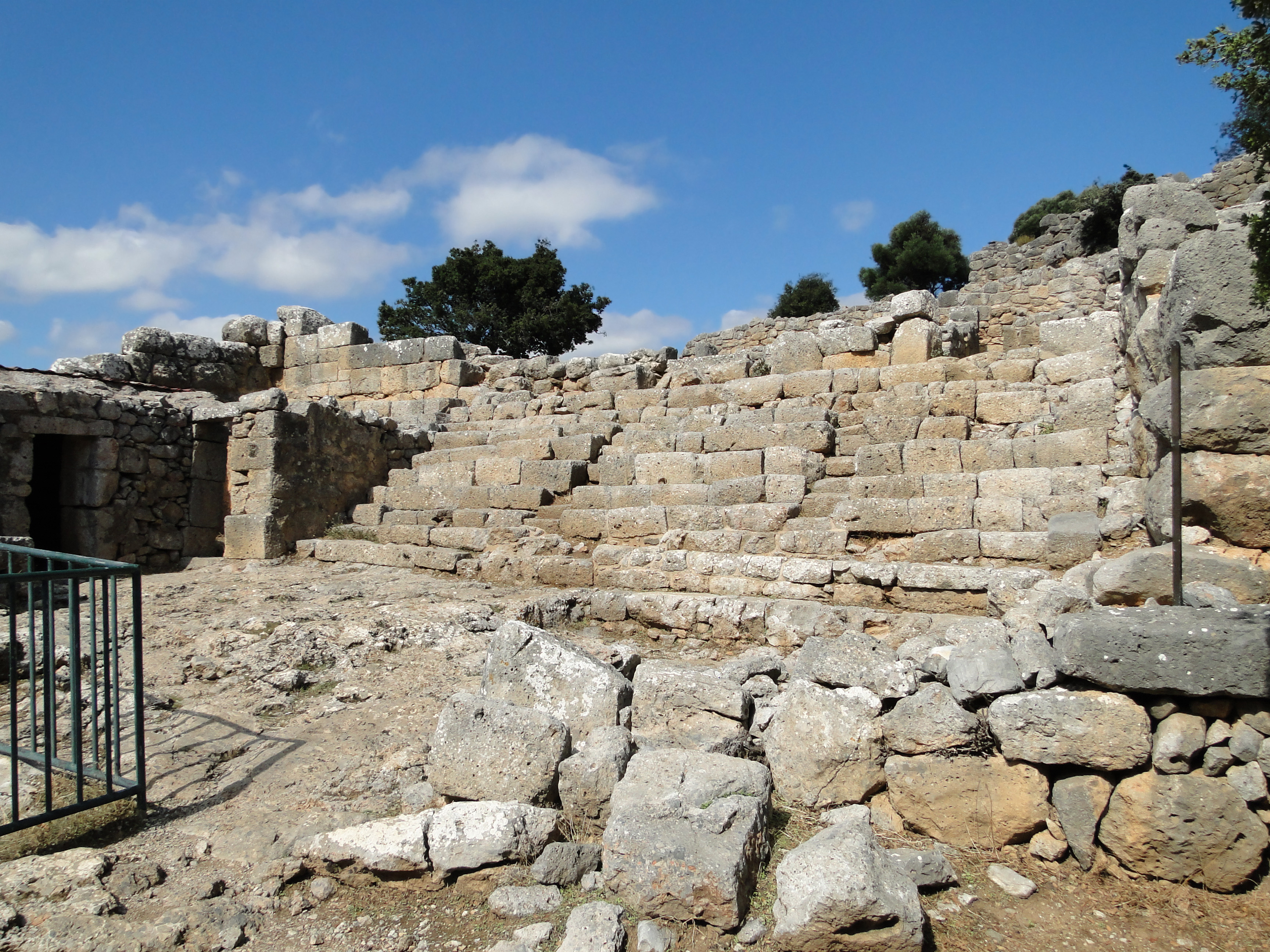|
Palaemyndus
Palaemyndus or Palaia Myndos ( grc, Παλαιάμυνδος or Παλαιὰ Μύνδος) was a town of ancient Caria, near Myndus, which was its successor settlement. Palaemyndus seems to have been the ancient place of the Carians which became deserted after the establishment of the Dorian Myndus. Its site is located near Bozdağ Bozdağ is a town in İzmir Province, Turkey. Geography Bozdağ is a part of Ödemiş district of İzmir province. It is at the east of the province at on Bozdağ Mountains which it is named after. Distance to Ödemiş is . The population of ..., Asiatic Turkey. References Populated places in ancient Caria Former populated places in Turkey {{AncientCaria-geo-stub ... [...More Info...] [...Related Items...] OR: [Wikipedia] [Google] [Baidu] |
Myndus
Myndus () or Myndos ( el, ) was an ancient Dorian colony of Troezen, on the coast of Caria in Asia Minor, (Turkey), sited on the Bodrum Peninsula, a few miles northwest of Halicarnassus. The site is now occupied by the modern village of Gümüşlük. History Myndos was protected by strong walls, and had a good harbor. ( Paus. ii. 30. § 8; Strabo xiv. p. 658; Arrian, Anab. i. 20, ii. 5.) Otherwise, the place is not of much importance in ancient history. Both Pliny (v. 29) and Stephanus of Byzantium (''s. v.'') mention Palaemyndus as an ancient Carian settlement near to Myndus, which seems to have become deserted after Dorian Mynduse was founded. (Comp. Strab. xiii. p. 611). Mela (i. 16) and Pliny (''l. c.'') also speak of Neapolis in the same peninsula and as no other authors mention such a place in that part of the country, it had been supposed that Myndus (the Dorian colony) and Neapolis were the same place. Pliny, however, mentions both Myndus and Neapolis as tw ... [...More Info...] [...Related Items...] OR: [Wikipedia] [Google] [Baidu] |
Ancient Caria
Caria (; from Greek: Καρία, ''Karia''; tr, Karya) was a region of western Anatolia extending along the coast from mid-Ionia (Mycale) south to Lycia and east to Phrygia. The Ionian and Dorian Greeks colonized the west of it and joined the Carian population in forming Greek-dominated states there. Carians were described by Herodotus as being of Minoan descent,''The Histories'', Book I Section 171. while he reports that the Carians themselves maintained that they were Anatolian mainlanders intensely engaged in seafaring and were akin to the Mysians and the Lydians. The Carians spoke Carian, a native Anatolian language closely related to Luwian. Also closely associated with the Carians were the Leleges, which could be an earlier name for Carians. Municipalities of Caria Cramer's detailed catalog of Carian towns in classical Greece is based entirely on ancient sources. The multiple names of towns and geomorphic features, such as bays and headlands, reveal an ethnic layer ... [...More Info...] [...Related Items...] OR: [Wikipedia] [Google] [Baidu] |
Carians
The Carians (; grc, Κᾶρες, ''Kares'', plural of , ''Kar'') were the ancient inhabitants of Caria in southwest Anatolia. Historical accounts Karkisa It is not clear when the Carians enter into history. The definition is dependent on corresponding Caria and the Carians to the "Karkiya" or "Karkisa" mentioned in the Hittites, Hittite records. Bronze Age Karkisa are first mentioned as having aided the Assuwa League against the Hittite King Tudhaliya I. Later in 1323 BC, King Arnuwandas II was able to write to Karkiya for them to provide asylum for the deposed Manapa-Tarhunta of "the land of the Seha River", one of the principalities within the Luwians, Luwian Arzawa complex in western Anatolia. This they did, allowing Manapa-Tarhunta to take back his kingdom. In 1274 BC, Karkisa are also mentioned among those who fought on the History of the Hittites, Hittite Empire side against the Egyptians in the Battle of Kadesh. Taken as a whole, Hittite records seem to point at a Luw ... [...More Info...] [...Related Items...] OR: [Wikipedia] [Google] [Baidu] |
Dorians
The Dorians (; el, Δωριεῖς, ''Dōrieîs'', singular , ''Dōrieús'') were one of the four major ethnic groups into which the Hellenes (or Greeks) of Classical Greece divided themselves (along with the Aeolians, Achaeans, and Ionians). They are almost always referred to as just "the Dorians", as they are called in the earliest literary mention of them in the ''Odyssey'', where they already can be found inhabiting the island of Crete. They were diverse in way of life and social organization, varying from the populous trade center of the city of Corinth, known for its ornate style in art and architecture, to the isolationist, military state of Sparta. And yet, all Hellenes knew which localities were Dorian, and which were not. Dorian states at war could more likely, but not always, count on the assistance of other Dorian states. Dorians were distinguished by the Doric Greek dialect and by characteristic social and historical traditions. In the 5th century BC, Dorians an ... [...More Info...] [...Related Items...] OR: [Wikipedia] [Google] [Baidu] |
Anatolia
Anatolia, tr, Anadolu Yarımadası), and the Anatolian plateau, also known as Asia Minor, is a large peninsula in Western Asia and the westernmost protrusion of the Asian continent. It constitutes the major part of modern-day Turkey. The region is bounded by the Turkish Straits to the northwest, the Black Sea to the north, the Armenian Highlands to the east, the Mediterranean Sea to the south, and the Aegean Sea to the west. The Sea of Marmara forms a connection between the Black and Aegean seas through the Bosporus and Dardanelles straits and separates Anatolia from Thrace on the Balkan peninsula of Southeast Europe. The eastern border of Anatolia has been held to be a line between the Gulf of Alexandretta and the Black Sea, bounded by the Armenian Highlands to the east and Mesopotamia to the southeast. By this definition Anatolia comprises approximately the western two-thirds of the Asian part of Turkey. Today, Anatolia is sometimes considered to be synonymous with Asian ... [...More Info...] [...Related Items...] OR: [Wikipedia] [Google] [Baidu] |
Populated Places In Ancient Caria
Population typically refers to the number of people in a single area, whether it be a city or town, region, country, continent, or the world. Governments typically quantify the size of the resident population within their jurisdiction using a census, a process of collecting, analysing, compiling, and publishing data regarding a population. Perspectives of various disciplines Social sciences In sociology and population geography, population refers to a group of human beings with some predefined criterion in common, such as location, race, ethnicity, nationality, or religion. Demography is a social science which entails the statistical study of populations. Ecology In ecology, a population is a group of organisms of the same species who inhabit the same particular geographical area and are capable of interbreeding. The area of a sexual population is the area where inter-breeding is possible between any pair within the area and more probable than cross-breeding with ind ... [...More Info...] [...Related Items...] OR: [Wikipedia] [Google] [Baidu] |




